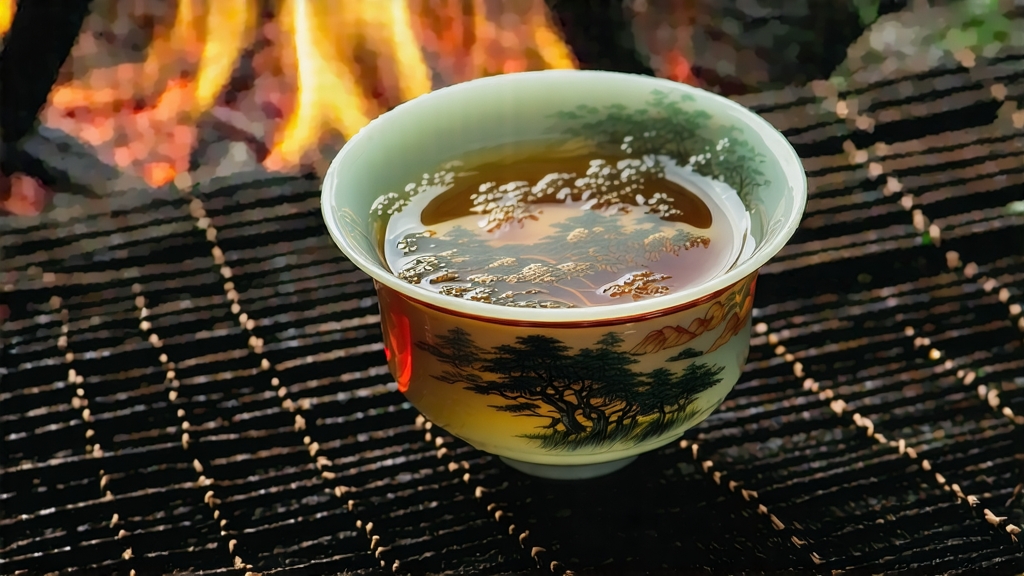
If every tea tells a story, Lapsang Souchong whispers legends of mist-clad cliffs, itinerant merchants, and the moment when China first gifted the world the taste of black tea. Originating in the Wuyi Mountains of northern Fujian province during the late Ming dynasty (circa 1567–1610), this leaf is universally acknowledged as the earliest black tea ever created. Locals still call it Zheng Shan Xiao Zhong—“small leaf from the original mountain”—to distinguish authentic Wuyi leaf from later imitations. European traders who reached the port of Xiamen in the early 1600s carried the tea to Amsterdam, London, and Paris, where its smoky perfume bewitched royal courts and gave birth to the English word “bohea,” once synonymous with all black tea. Thus, Lapsang Souchong is not merely a beverage; it is the progenitor of every Assam, Ceylon, and Keemun that followed.
Geography bestows the first layer of identity. The Wuyi range is a UNESCO World Heritage basalt massif where narrow gorges trap humid maritime air, creating a micro-climate of perpetual fog and dramatic temperature swings between day and night. These conditions slow leaf growth, concentrating amino acids and volatile aromatics. The soil is a mineral-rich, gravelly laterite that drains quickly yet retains warmth, forcing tea roots to struggle and thus deepen their flavor. Within this 600-square-kilometer core zone, only leaves picked at 1,200–1,500 m elevation may legally bear the designation “Zheng Shan.” Every kilogram arrives in the village of Tongmu on the backs of pickers who climb 60-degree slopes before dawn, selecting only the tender second leaf on each stem together with its accompanying bud.
Two distinct styles now share the name Lapsang Souchong, separated by processing philosophy rather than leaf biology. The traditional, smoke-dried version (Yan Xun Zheng Shan) is the tea that stunned Europe; the newer, unsmoked “craft” style (Wu Yan Xiao Zhong) emerged after 2005 to satisfy domestic palates that prize sweetness over campfire. Both begin with the same small-leaf cultivar—Camellia sinensis var. sinensis, strain “Cai Cha”—yet diverge at the firing stage. Understanding this fork in the road is essential for any serious drinker.
Withering starts the transformation. Fresh leaves are spread 3 cm deep on bamboo trays set in the second story of wooden lofts whose latticed windows face the rocky canyon. Here, pine logs smolder 2 m below, generating a gentle updraft of 28–30 °C smoke that circulates for 6–8 hours. The leaf loses 60 % of its moisture while absorbing α-pinene, longifolene, and other resinous terpenes that later translate into trademark tarry sweetness. Master craftsmen shuffle the trays every 20 minutes, ensuring every blade receives the same aromatic baptism. Once the lamina feels leathery and bends without snapping, the leaf is ready for rolling.
Rolling is still done by foot—literally. A barefoot artisan steps into a shallow bamboo basket lined with 4 kg of withered leaf and begins a slow dance, shifting weight from heel to toe. The pressure bruises cell walls, initiating enzymatic oxidation while preserving the integrity of the bud. After 45 minutes the leaf mass turns mahogany and exudes a scent of honeyed raisins. Immediately it is scooped into wooden barrels where oxidation proceeds for 3–4 hours at 24 °C and 85 % humidity. During this interval, catechins convert to theaflavins and thearubigins, pigments that will later paint the liquor a glowing claret.
Now comes the critical act that separates the two styles. For smoked Lapsang, the same pine wood is split into finger-thin kindling and stacked into a narrow brick oven. A woven bamboo cylinder, called a Long, is placed above the hearth; the oxidized leaf is spread 5 cm thick inside. The fire is allowed to flare briefly, then smothered with fresh pine needles, creating a dense, cool smoke that perfumes the leaf for 30–40 minutes. Temperature never exceeds 80 °C, so the leaf dries slowly while adsorbing phenolic volatiles. In contrast, craft